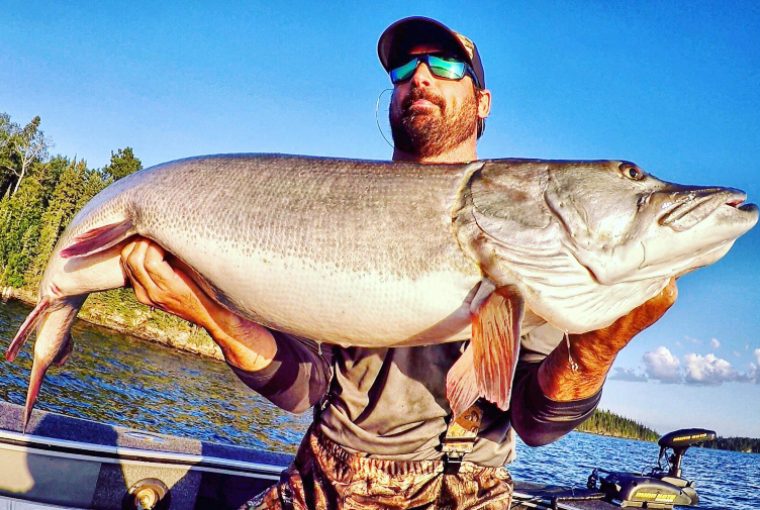
During every muskie season there’s a period when it’s no longer summer but it’s not really quite fall, either. Days are shorter, nights are cooler, water temps are falling, and weeds are past their prime. The timing varies by year and location, but it’s usually the month of September. I call this time of year a transition, as fish are transitioning from summer patterns to fall patterns, and calls for a versatile approach.
Hide and seek
At this transitional time of year everything is in play — from summer spots, like shallow weeds, to classic fall spots, like reefs and prominent rock points. Fish will use any and all types of structure, which leaves the playbook wide open for catching them.
Here’s a perfect example from last season. I was guiding two brothers, Alex and Devin, on their first trip to Lac Seul. We were employing my strategy of “anything and everything” after I explained how we would be bouncing back and forth between weeds and deeper rock structure.
We made our way up the lake and were fishing a prominent rock point (a classic fall spot) when Alex’s rod loaded up. The result was a big muskie in the net, with a jerkbait T-boned in its mouth. After high-fives, photos, and release we were on the move.
The next spot, within view of where we just caught, is one of my A-plus summer spots. It’s a textbook spot that features a shallow rock/boulder bar, surrounded by weed that sticks out 100 yards off the point of an island.
I instructed the guys to change baits to something that would run over top of the weeds — a bucktail and a topwater, and we started casting. About three quarters of the way down the bar, Alex’s rod loaded up again. Another big fish hit the net, this time with a bucktail in its mouth.
In a matter of 20 minutes, on two completely different spots, with two different types of baits, we boated more than 103 inches of muskie.
Back to the weeds
Lac Seul features a lot of weedy structure and in the height of the summer it’s challenging to find muskies anywhere else. Weeds account for 90% of the fish I catch in July and August. That’s not the case for every fishery, but that’s what I’m accustomed to.
It’s not until late summer when the weeds start to die that the breakdown of the summer range and habitat starts to occur and rock structure becomes much more viable on Lac Seul. It’s not to say that fish suddenly abandon weeds altogether, but they definitely start to use them less and less.
Warming trends are a good time to revisit weeds during transition time. A period of warm and sunny weather draws fish back into shallow water. It’s a pattern I count on whenever surface water temperatures spike in September.
This pattern really hit me one September a number of years ago when I was fishing with my friend Mike Willems. We were wearing shorts and T-shirts in September, but it was tough going. We tried a tiny weedy pocket and raised two really nice fish from it. That got our attention and we moved to a larger bay to cast over weeds. I spotted a big muskie resting just under the surface and told Willems to cast towards it. The fish followed his bucktail to the boat and went around several turns on the figure eight.
We were planning to come back on this fish when we saw it again, right beside the boat. After another figure-8, the fish hit. The muskie was airborne and tail walking beside my boat, throwing the bucktail in the process. It was an unforgettable experience that always reminds me to check shallow weeds if things heat up in September.
This, that, and the other thing
During transition when all different types of spots are in play, the same can be said about different types of baits. There isn’t a type of bait I’d rule out. Everything from topwaters to jigging Bondy baits in 20-plus feet can produce fish. Crankbaits, jerk-baits, swimbaits, bucktails, gliders, dive-and-rise, and rubber of all varieties get fished in my boat. Most of the season I’m not a big bait switcher from one spot to the next, but during the transition I am.
One category of baits I use a lot is pull-and-pause baits, like Medussas, Bull Dawgs, tubes, and HardHeads, on the pause they sink. They’re versatile and can be fished quickly over shallow water, or you can work them down to whatever depth you want.
Another technique I like to use for a different look altogether is jerk trolling. It’s a productive tactic at any time of year, but can really come alive during transition. Jerk trolling is a rod-in-hand trolling technique that excels for trolling structure. I use it to cover the deeper breaks, when casting shallower isn’t producing. None of my jerk trolling runs are long — most are 100 to 200 yards. Think of it as a spot-on-spot trolling approach. My favourite baits are 9-inch Grandmas. At 2 to 3 mph with no more than 30 feet of line out, keep ripping/jerking your rod to make the bait dart/dive/move erratically, and then pause. Hold on — hits are unmistakable.
Transition is an unpredictable time of year were muskie can be found on any type of structure and across varied depths. Nearly any presentation can be the winner, and finding fish is often more challenging than catching them.

Ben Beattie is a fulltime fishing guide and outdoor writer, living in Sioux Lookout. His passions are big pike and muskie, lake trout and walleye. He is also an avid hunter. Ben can be reached at [email protected]
Originally published in the August 2020 issue of Ontario OUT of DOORS magazine.


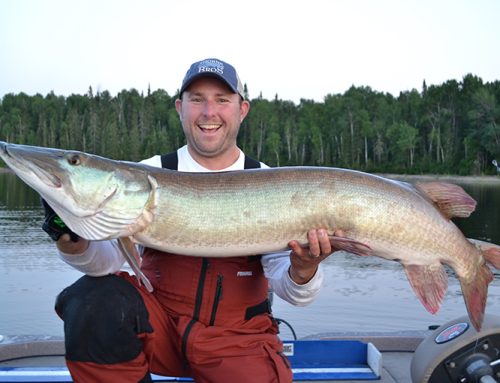
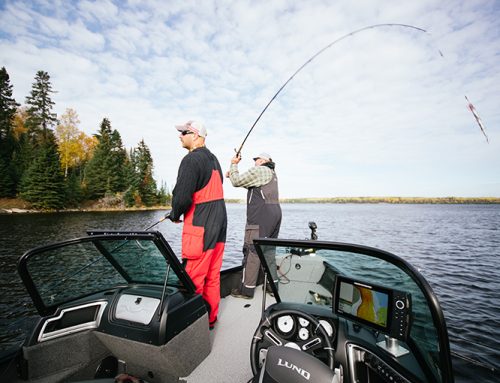
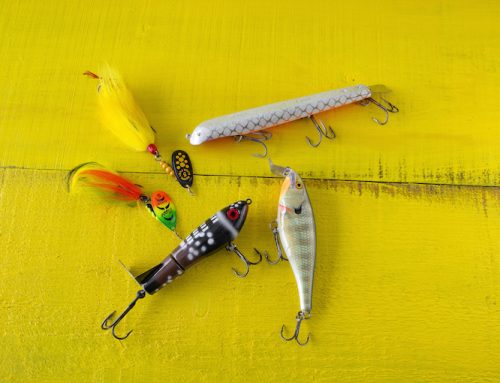
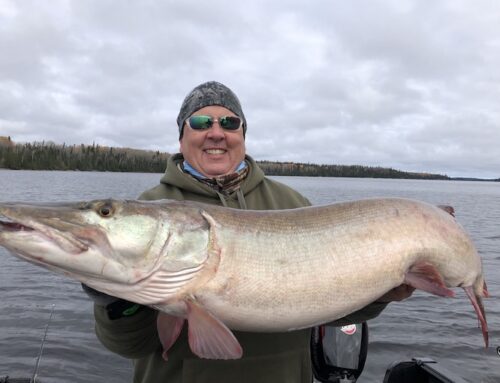
Leave A Comment